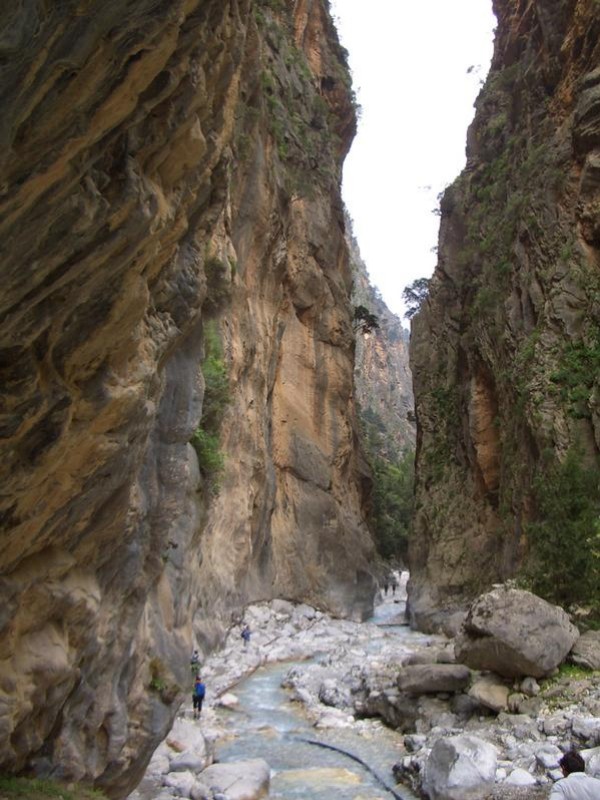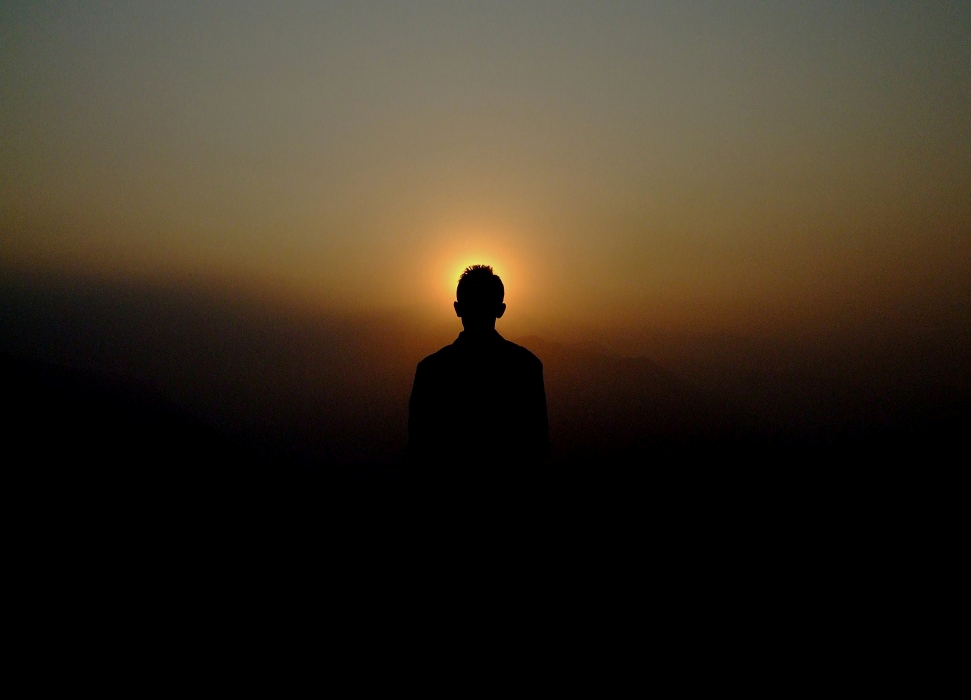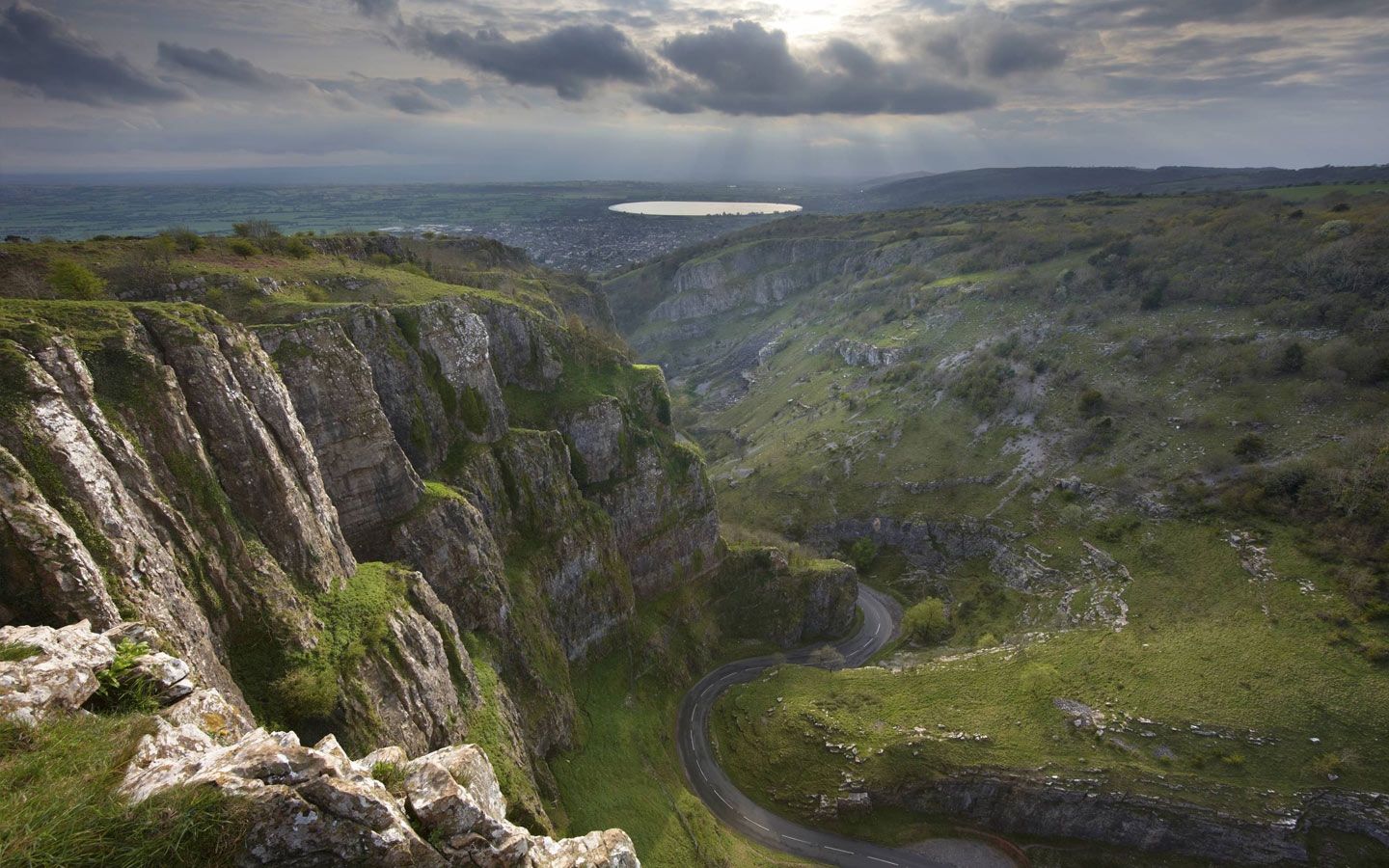Overhanging the gorge are great angular outcroppings of volcanic rock—solid and sharp-edged protrusions from some long-ago eruption of Lassen or some other volcano in the area.
 In many places, the sheer sides of the gorge have huge slabs balanced on top of them–some looking like a giant stonemason had placed them there. Other large formations, with deep fissures where they meet the canyon wall, sit vertically in precarious positions, awaiting the next major earthquake to send them tumbling into the stream below.
In many places, the sheer sides of the gorge have huge slabs balanced on top of them–some looking like a giant stonemason had placed them there. Other large formations, with deep fissures where they meet the canyon wall, sit vertically in precarious positions, awaiting the next major earthquake to send them tumbling into the stream below.
Beyond the gorge, gently sloping grasslands ascend to the base of the sheer cliffs that form the perimeter of the canyon. Perched near the precipice under one of the plentiful oaks in the area, I can hear the rushing of the stream at the bottom of the glistening gorge, which stretches for hundreds of meters down and away.
The grasses around me are so dry that they break at the touch, and appear golden from even a few meters away. Directly across, beyond the narrow gorge within the relative sanctuary of the large, fan-shaped canyon, are majestic cliffs, rising hundreds of meters into a cloud-scudded sky.
Big buzzards, masters of the air in their own right, appear as lumbering leviathans next to smaller, more agile woodland hawks that follow in their wake, screeching as they wheel and dive into the trees at the foot of the cliffs.
Psychological time ends, and the mind, anchored in the present, ranges briefly over the past. The people who once lived in this beautiful place come to mind and to heart. Is something of their essence still here?
Native Americans loved this canyon, and revered it as sacred. They were wiped out, driven off, or assimilated into a dominant culture that thought of the land only in terms of profit. But listening deeply in the meditative state, one seems to hear whispers across the land of their lives. Is it imagination, or actuality?
The undivided, undirected mind in meditation is like a laser effortlessly boring through the strata accumulated in content-consciousness—not only from one’s own life, but also from the lives of all previous generations. Through such openings the light of the cosmos pours into one, and one participates, however briefly, in the infinite intelligence beyond thought.
Even for adept meditators, indeed perhaps even for ‘enlightened’ people, the meditative state is not a constant, but a quality of consciousness that one has to ignite each day by making space for undivided attention. Nature is crucial to the process, though a mindful, silent walk through a park in the middle of a city, followed by a half hour’s sitting in one’s apartment with the late-day light flooding in as the bustle goes on below, can be sufficient to generate a radical shift in consciousness.
Spiritual knowledge is the easiest thing to fake, but meditative states are much harder to feign. The world is full of followers, and few stand alone. Any clever man or woman can put on wisdom robes and pass himself or herself off as an enlightened guru. There’s an entire industry of such charlatans now, hawking their books, DVD’s, retreats, or whatever.
The supposedly enlightened ones mislead people, telling them how they can get from here to there, from  this consciousness to the next. Becoming sells, especially with regard to enlightenment, because time is all we know in one form or another.
this consciousness to the next. Becoming sells, especially with regard to enlightenment, because time is all we know in one form or another.
One does not ‘attain’ illumination however; one enters a timeless dimension through the back door, quietly and unexpectedly even to oneself. There’s nothing to reach as an end. Growth only occurs through negation, though that sounds like a contradiction in terms.
Our consciousness is based on time. Not chronological time, but psychological time–becoming this or becoming that. We’re nearly always looking forward to something, or back at and from our memory.
To some degree looking forward to things is healthy, but when time-based consciousness is all one knows, one is a slave to becoming and memory. That mode prevents one from growing into a human being. Time is obviously necessary for carrying out tasks, but are time and evolution involved in spiritual growth and psychological revolution?
Astronomers often say that when we look out at a distant star or galaxy, we’re seeing it as it was many light years ago, since it took the light from the object a hundred or a million years to reach us. But if you think about it, that is nonsensical. It simply means that every instant of the past is enfolded in the present.
Psychological time is antithetical to transmutation and revolution. Spiritual growth only occurs when time as the past, projected into the future, ends. It’s therefore a confusion of the highest order to talk about ‘conscious evolution.’ When we are really changing, we aren’t conscious of it until later, and then only fleetingly, like looking in a rear view mirror while driving down the highway.
Though I haven’t completely ended time within myself, time ends in meditation nearly every day, and I’ve glimpsed how timeless consciousness can function in the field of time. But time-based consciousness has no relationship to the timeless.
But if that shift happens spontaneously, does one even know when psychological time stops? Yes, because the mind no longer looks forward or back; it just effortlessly remains with what is.
However long that lasts by the clock, one is changed in experiencing timeless being. My question are: Why does time-bound consciousness return? Why is psychological time the default position of the brain?
Martin LeFevre

